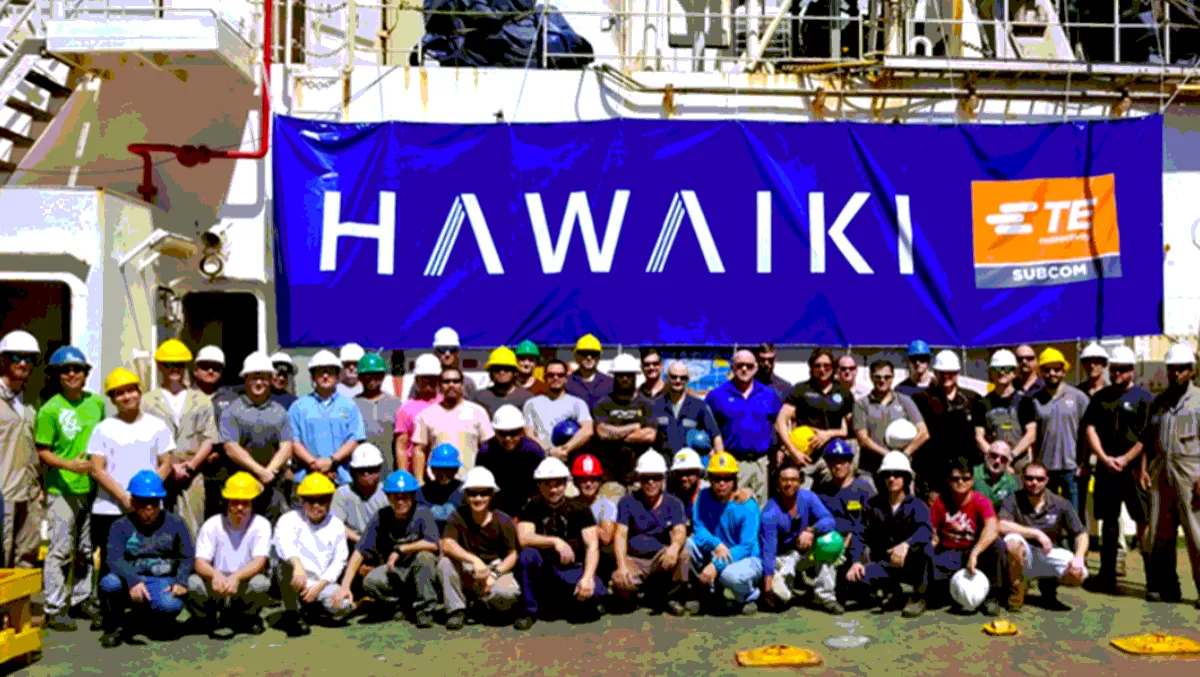
Subsea cable connecting the U.S. and ANZ opens for business
Hawaiki Submarine Cable LP today declared its gigantic 15,000 km fibre optic deep-sea cable linking Australia, New Zealand, the Pacific, and the United States to be open for Internet traffic.
Competition is undoubtedly opening up in the market carrying internet traffic to and from New Zealand as interestingly, this is the first high-speed connection to New Zealand that Spark doesn't have a stake in.
All up, the Hawaiki Submarine Cable cost US$300 million with an expected shelf-life of 25 years.
Hawaiki chief executive officer Remi Galasso who battled for several years to secure investors and customers, says the cable completion is a new dawn for digital communications in the region, delivering 43 terabytes of additional capacity – multiple times the current levels of Australia and New Zealand combined.
"This 25-year transoceanic infrastructure opens the door for unprecedented levels of economic, social and research collaboration right across the Pacific," says Galasso.
"Hawaiki is the fastest and largest cross-sectional capacity link between the U.S. and Australia and New Zealand. It will significantly enhance our connectivity to the rest of the world and, ultimately, improve the everyday life of our communities.
27 months was the time it took to fully construct the Hawaiki cable system, including the marine survey, design, manufacturing, and cable laying, undertaken by TE SubCom.

"The Hawaiki Cable System is a great endeavour, achieved by a culmination of extraordinary effort and strong relationships. TE SubCom is pleased to play an important role in the success of this system which will add value to local economies and communities," says TE SubCom president Sanjay Chowbey.
Speaking of customers, Hawaiki has managed to secure some heavyweights in the industry with Amazon Web Services (AWS), Vodafone, American Samoa Authority (ASTCA), and Research and Education Advanced Network New Zealand (REANNZ) all coming aboard.
According to Galasso, demand for capacity in the South Pacific is skyrocketing 45 percent year-on-year, so the completion of this project could certainly be deemed 'timely' with infrastructure to support critical applications such as business-grade cloud services, real-time content delivery and ultra-low latency networks.
REEANZ has locked in a 25 year anchor tenancy on behalf of the NZ government.
"REANNZ and Hawaiki share a goal of increasing access to research and educational opportunities - for them in the Pacific and for us connecting researchers, educators and innovators, nationally and globally," says REANNZ CEO Nicole Fergusson, adding that this new high-speed, high-performance connectivity removes the "tyranny of distance" allowing for the easy transfer of data-intensive research anywhere in the world.
Vodafone CEO Russel Stanners says the company wishes to congratulate the team at Hawaiki for their effort and persistence in completing the project.
"As an anchor tenant of the Hawaiki cable system, Vodafone can now offer our customers triversity across the international cable systems that connect New Zealand to the world," says Stanners.
"In addition to greater levels of resiliency, the Hawaiki cable system brings greater competition to the New Zealand market, meaning we now have more choice and flexibility when it comes to designing connectivity solutions that meet the diverse needs of New Zealand consumers and businesses alike.
Galasso says it has been quite the undertaking and it couldn't have been done without all the external support.
"We are very grateful to all of our partners, including our customers, suppliers and financiers, who have been supporting us since the creation of the company," says Galasso.
"My partners, Sir Eion Edgar, Malcolm Dick, Greg Tomlinson, and I would like to express our deep gratitude and respect to Hawaiki's employees, whose dedication, commitment and fighting-spirit made this idea a reality.

